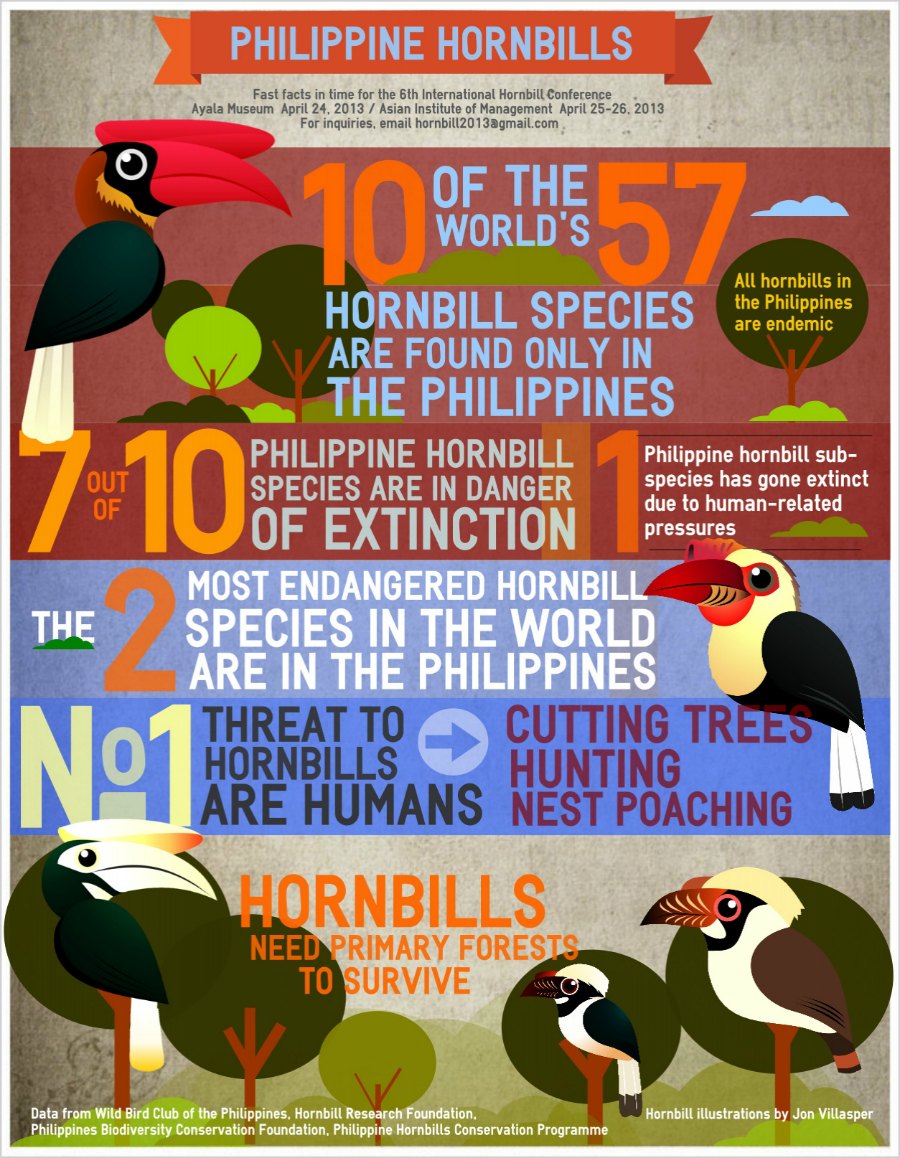INFOGRAPHIC: PHL is home to the world's two most endangered hornbill species
(Updated 1:00 pm, 8 April 2013) Of the 600 species of birds found in the Philippines, two hornbill species are in the critically endangered category of the International Union for Conservation of Nature's red list for wild species, which means they are at the highest risk of extinction.
The Sulu Hornbill (Anthracoceros montani) is the rarer of the two, with an estimated population of only 40 individuals scattered in the forests of Tawi-Tawi and other islands in the Sulu archipelago, according to the global conservation partnership Bird Life International.
The Rufous-headed Hornbill (Aceros waldeni) has higher numbers, between 1,500 to 3,749 individuals found in the mountains of Negros and Panay in Western Visayas, the group said.
According to the Wild Bird Club of the Philippines (WBCP), the destruction of forests for agriculture and logging are the biggest threats to the country's 10 species of hornbills, which are all endemic to the archipelago.
Efforts to raise public awareness and discuss the plight of the bird species are the main agenda when ornithologists, conservationists, bird watchers, environmentalists and students come together in Makati from April 24 to 26 for the 6th International Hornbill Conference.
The meeting will open with an exhibit at the Ayala Museum, and a soft launch of the book "Hornbills of the World." The keynote speakers include Dr. Woraphat Arthayukti from the Hornbill Research Foundation and Dr. Juan Carlos Gonzalez from the University of the Philippines.
According to the organizers, the conference is a crucial one for the Philippines, which recorded the first known hornbill extinction--the Ticao Tarictic, a subspecies of the Visayan Hornbill found in Ticao Island in Masbate -- among the world's 57 hornbill species.
“It was abundant in the early 1900s but recent surveys have found no evidence of its persistence, and little suitable habitat,” according to Bird Life International.
Three other hornbill species are on the IUCN red list: the Mindoro Hornbill and Visayan Hornbill are listed as endangered, while the Palawan Hornbill is listed as vulnerable.
"Hornbills need primary or well-developed secondary forests to thrive, and like most endemic wildlife, cannot survive in deforested areas or man-made plantations," WBCP said.
The birds are also threatened by hunting, trapping, and nest poaching for food, as well as the illegal pet trade and sport. The group noted that the weak enforcement of environmental conservation measures also contributes to the decline in the local hornbill population. – Amanda Lago/YA, GMA News
Infographic courtesy of the Wild Bird Club of the Philippines



